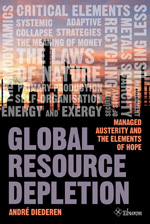But stuff just keeps coming up that is too wild or too woolly to not at least post it. I mean why in the world would you turn down money for high speed rail? The upgrades and new crossings and crossing guards are worth it.
http://www.forconstructionpros.com/online/article.jsp?siteSection=25&id=18770
Calif., Fla. Big Winners as U.S. Redistributes Rejected Grants
California and Florida were big winners as the Obama administration announced the redistribution today of more than $1 billion in high-speed rail grants abandoned by incoming governors in Wisconsin and Ohio.
Transportation Secretary Ray LaHood officially killed projects in those states after a monthlong dispute with the two Republican governors-elect, Wisconsin’s Scott Walker and Ohio’s John Kasich.
Both Republicans campaigned against the rail projects, saying they would leave their states on the hook for operating costs and take away road-repair money. And both requested permission to redistribute the funds to other transportation projects.
But the Obama administration insisted the states’ stimulus grants be spent on high-speed rail, sparking protests by Wisconsin manufacturers that had been banking on the rail project and jockeying among states seeking fresh cash.
The administration has now reshuffled $1.195 billion — $810 million from Wisconsin and $385 million from Ohio — and is sending it to 14 states. The biggest grant, $624 million, will go to California, while $342.3 million will go to Florida and $161.5 million to Washington state.
:}
Then there is all the mucking around in an alleged Climate Change Conference. Here is what the Climate Change disbelievers have to say. But really for all they are accomplishing couldn’t they teleconference?
http://dailycaller.com/2010/12/10/hypocrisy-alive-and-well-at-cancun-climate-conference/
From November 29 to December 10, delegates from 194 countries gathered in sunny Cancun, Mexico to “lay the ghost of Copenhagen to rest,” as one dignitary put it. After last year’s chaotic, disastrous and worthless climate change conference in Copenhagen, the goal this year was simple: avoid further embarrassment.
The focus has been on hashing out details for a global climate fund, extending the Kyoto Protocol beyond 2012, and establishing an official agreement among developed countries to reduce their carbon dioxide emissions by about 40 percent by 2020.
But in the middle of all the global-warming demagoguery and calls for developed nations to shell out $100 billion per year by 2020 in climate reparations to help less-developed countries cope with the unfair burden of climate change, one thing has very obviously not changed: the hypocrisy.
Yes, hypocrisy was present in Cancun just as it was in Copenhagen in 2009, Ponzan in 2008, Bali in 2007, and the many other climate change summit cities before them. As hundreds of officials travel in gas-guzzling jets and carbon-dioxide emitting cars to the conference site and stay in luxurious, high electricity-consuming resorts, the carbon footprint of the U.N. Framework Convention on Climate Change (UNFCCC) is ironic, to say the least.
:}
More next week
:}














